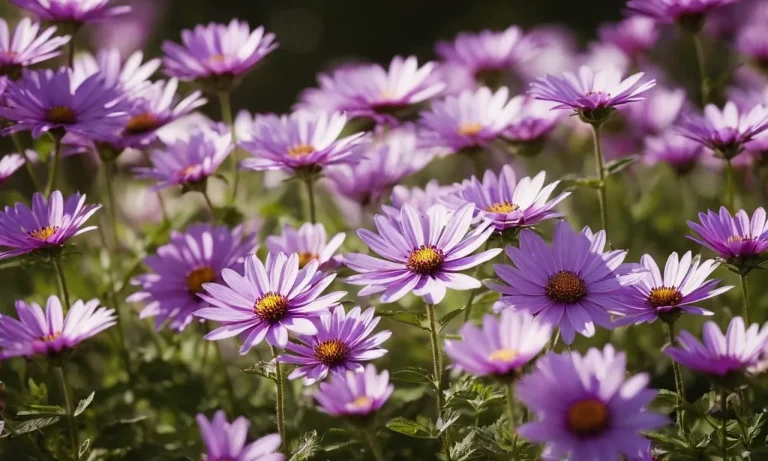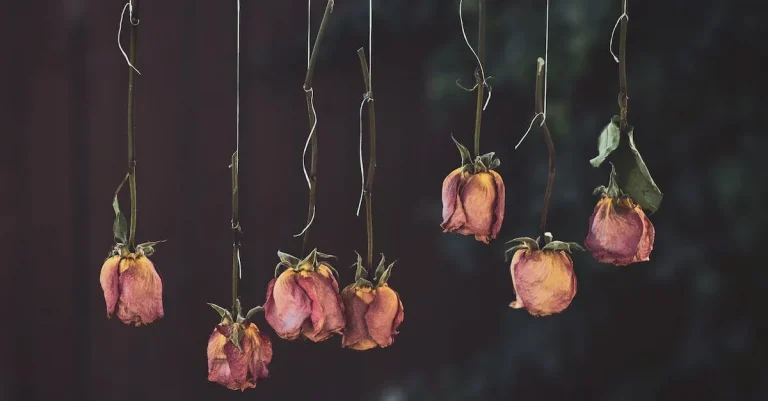The rose of Sharon, with its delicate pink or white petals, has long been admired for its beauty. But beyond the superficial, this flowering plant holds a much deeper spiritual meaning that resonates with people across different faiths.
In short, the rose of Sharon symbolizes divine love, sacrifice, and resurrection. It represents Jesus Christ and his selfless nature.
In this comprehensive guide, we will uncover the origins of this meaningful flower, its significance in the Bible, its ties to Jesus Christ as a Messianic figure, and how it has endured as a symbol of devotion and spiritual rebirth.
The History and Origins of the Rose of Sharon
The Identity of the Mysterious Flower
The Rose of Sharon has captured people’s imagination for centuries, yet its exact identity has remained shrouded in mystery. Many biblical scholars argue whether the “rose” refers to a actual rose or other flowers like irises or tulips. Linguistic analysis offers clues but no definitive answer.
Some believe the Rose of Sharon refers to a type of tulip found in the mountains of Galilee with large, showy flowers that bloom in the barren summer heat. Others suggest it may be a desert iris prized for its delicate beauty and hardiness.
Still others contend it is a literal rose – perhaps a wild ancestor of today’s hybrid teas.
Whatever the exact species, the Rose of Sharon has become a symbol of love and beauty triumphing over hardship – much like a delicate flower bursting into bloom against a harsh landscape. This timeless imagery has inspired poets, artists, and casual admirers for generations.
Etymological Breakdown and Biblical Roots
The term “Rose of Sharon” appears only once in the Bible in Song of Solomon 2:1 – “I am the rose of Sharon, and the lily of the valleys.” Let’s break down the possible meanings:
- “Rose” may come from the Hebrew word “ḥăḇatstseleth” meaning a flower or blossom in general, not necessarily a rose.
- “Sharon” refers to a fertile plain along the Mediterranean coast, so the “rose of Sharon” could be a flower common in that region.
The mention of a “lily” also hints that the verse invoking symbolic flowers rather than a literal single species. So what does this tell us about the history and origins?
- The “Rose of Sharon” grew wild in ancient Israel/Palestine, most likely on the coastal Sharon plain.
- It was well-known enough in biblical times to convey instantly recognizable imagery.
- The exact species remains a tantalizing mystery!
| Interpretations | Likelihood |
| A wild tulip species | High – tulips grow wild in the region |
| An iris variety | Moderate – some irises seen in the area |
| An ancient rose ancestor | Low – no wild roses known from the plain |
So while the Rose of Sharon continues to elude definitive identification, its rich symbolism still blooms today – a floral emoji 🌹 that crosses cultures and history!
Exploring the Rose of Sharon’s Significance in the Bible
Old Testament References and Connections to Love
The Rose of Sharon first appears in the love poetry of Song of Songs 2:1, where the Beloved says, “I am the Rose of Sharon, a lily of the valleys.” In this context, the rose is seen as a symbol of beauty and love.
The Song of Songs depicts a poetic celebration of romantic and erotic love, so the reference evokes the rose’s connotations of affection and desire.
Some scholars believe the “Rose of Sharon” refers specifically to a type of crocus flower that blooms profusely in the coastal Sharon Plain region during spring. This points to themes of new life and rebirth associated with love.
Additionally, theidopsis barbata, commonly known as the Rose of Sharon, grows well in hot, dry areas – perhaps symbolic of a passionate love that endures hardship.
Beyond the Song of Songs, the rose/lily appears elsewhere symbolizing love in the Hebrew scriptures. For example, crocuses cover the land in a vision of renewal in Isaiah 35. And in Hosea 14:5, Israel blossoms “like a lily” when restored to divine favor – picturing roses with connotations of devotion.
New Testament Links to Christ’s Sacrifice and Resurrection
The rose takes on more explicitly Christian meaning in the New Testament. When the three Magi bring baby Jesus frankincense and myrrh in Matthew 2:11, this foreshadows his sacrificial death. Incidentally, some translations say the Magi bring the Christ child a “Rose of Sharon” – linking it directly to Jesus.
Additionally, the rose symbolizes Christ himself – often depicted in medieval religious artwork as the “Mystic Rose.” This connects to biblical passages describing Jesus as the “rose of perfection” (Sirach 50:8).
As Augustine stated, the rose with its beauty yet thorny stems represents Christ’s majestic divinity veiled in tortured humanity.
Themes of resurrection also attach to the rose in scripture. Isaiah foretells deserts blooming “like a rose” (Isaiah 35:1), while the Book of Wisdom describes how “the just man, though he die early, shall be at rest.
For the age that is honorable comes not with the passing of time, nor can it be measured in terms of years. Rather, understanding is the hoary crown, and an unsullied life, the attainment of old age” (Wisdom 4:7-9). This righteous man will bloom into new life like a rose after winter.
The Enduring Legacy of the Rose of Sharon as a Messianic Symbol
Parallels Between the Flower and Jesus Christ
The rose of Sharon (Hibiscus syriacus) has long been seen as a symbol of Jesus Christ in messianic prophecy and Christian iconography due to striking parallels with Christ’s life and ministry. Its white or pale pink blossoms evoke purity and divinity, while its heart-shaped petals represent love and compassion.
Like Christ sacrificing himself on the cross, the rose of Sharon’s flowers last only a day before wilting. This cycle of death and rebirth mirrors Christ’s resurrection.
How the Plant Came to Signify Spiritual Rebirth and Eternal Life
The rose of Sharon’s association with resurrection and eternal life derives from the ancient legend of Aphrodite crying rose petals over Adonis’ blood. As the story goes, beautiful Adonis was gored by a wild boar, killing him.
The goddess Aphrodite wept over her slain lover’s body, and where her tears mixed with his blood, crimson anemones sprouted. Moved by Aphrodite’s grief, Zeus restored Adonis to life, allowing him to spend six months above ground and six months in the underworld.
This narrative of death and rebirth reflects the cyclical blooming of the rose of Sharon. Thus, the plant became a symbol of spiritual rebirth and Christ’s promise of eternal life.
Prevalence in Religious Art and Architectural Designs
The rose of Sharon frequently appears in Christian paintings, stained glass windows, tapestries, and architecture as a symbol of the Messiah. Some examples include:
- 12th century Book of Kells featuring intricate rose of Sharon designs
- Rose windows adorning iconic Gothic cathedrals like Notre Dame
- The flower woven into Raphael’s tapestry cartoons for the Sistine Chapel
In colonial America, the rose of Sharon was used extensively in formal gardens due to its hardiness in hot climates and vibrant late summer blooms. As settlers converted Native Americans to Christianity, they spread the symbolic meaning of the plant as an emblem of Christ and the hope of salvation.
| Century | Prominent Uses of Rose of Sharon Symbolism |
|---|---|
| 12th Century | Illuminated Gospel manuscripts |
| 13th Century | Gothic cathedral stained glass |
| 16th Century | Sistine Chapel tapestries |
| 17th Century | American colonial gardens |
With roots tracing back to ancient legends and prevalence across centuries of Christian art forms, the rose of Sharon remains an iconic symbol of Jesus Christ’s death and resurrection.
Conclusion
In the Old and New Testaments, the rose of Sharon takes on layered meanings tied to divine love, sacrifice, redemption, and resurrection. Through Scripture, this visually stunning flower transforms into a Messianic symbol that represents the spiritual awakening made possible by Christ’s death and resurrection.
Beyond the Bible, the image of the rose continues to feature prominently in architecture, paintings, songs, and literature that explore concepts like devotion, renewal, and the eternal soul. Much more than just a delicate blossom, this flower will likely maintain its religious and symbolic gravitas for years to come.






